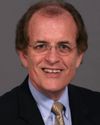Sure. First of all, the main responsibilities are listed in the document that I have here. I'm just looking through it now.
They are responsible, for the most part, for the patrol of the perimeter and the application of all the rules with respect to the movement of traffic at the airport as well, in terms of the car traffic and truck traffic. They are responsible, as well, for the detection of explosives and to alert.
They're also responsible for the issuance of the airside passes once the people have met the criteria of Transport Canada. We have the responsibility to search all employees or to screen all employees who are going into the restricted areas of the airport.
They're also responsible for putting in place the plans and emergency procedures for any sort of emergency.
There are in fact no jurisdictional disputes right now. They are the first responder for any activity that happens at the airport, but they will call in--depending on the nature of the item--the Montreal police, or the RCMP, depending on the issue. They dial 9-1-1, like any other citizen, and bring the police forces to bear.
There are no jurisdictional disputes. We have regular meetings with all the people responsible for the various law enforcement rules at the airport. Their efforts are coordinated regularly, and the cooperation level is very high.
In fact, we also have what we call un poste de quartier, a neighbourhood station, of the Montreal police force at the airport. So they're actually present in the airport. Normand can give you the exact details of how many officers are there at any point in time.



